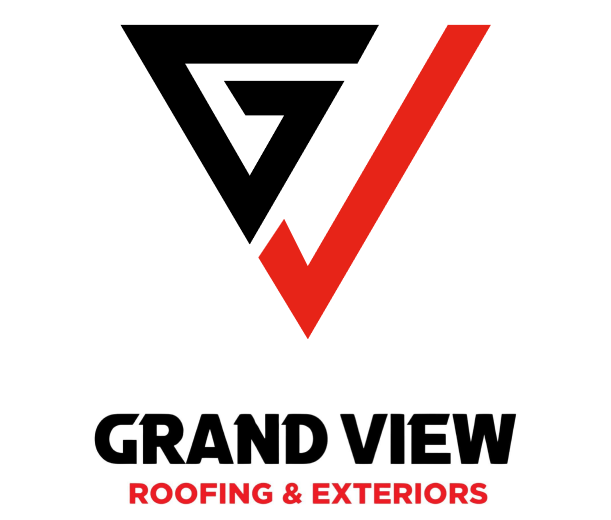Vinyl vs. Fiber-Cement Siding: Making the Right Choice for Your South Jersey Home

Selecting the right siding material stands out as one of the most critical decisions South Jersey homeowners face during construction or renovation projects. Your choice not only determines how well your home withstands the region’s weather patterns, but it also significantly impacts its curb appeal and property value. When narrowing down options, many homeowners find themselves comparing two popular alternatives: vinyl siding and fiber-cement siding.
These two materials represent distinctly different approaches to home protection. Vinyl siding has gained popularity for its affordability and low maintenance requirements, while fiber-cement siding has earned a reputation for exceptional durability and an authentic appearance. For coastal South Jersey properties that face harsh weather conditions, including salt spray, high winds, and humidity, the distinction between these materials becomes even more important.
Understanding the key differences between vinyl and fiber-cement siding helps homeowners make informed decisions based on their needs, budget, and long-term goals. From installation requirements to weather resistance, each siding alternative offers a unique set of advantages and limitations that deserve careful examination before making this significant investment in your home’s exterior.
Understanding Siding Materials: Composition and Manufacturing
Vinyl siding consists primarily of polyvinyl chloride (PVC), a synthetic plastic polymer combined with various additives that enhance durability and color retention. During manufacturing, raw materials are melted, mixed, and extruded into panels with carefully engineered thickness and profiles. UV inhibitors are incorporated as well to prevent sun damage and fading, while impact modifiers improve resistance to cracking in South Jersey’s fluctuating temperatures. The manufacturing process creates hollow backing that provides insulation benefits while maintaining flexibility.
In contrast, fiber-cement siding has a more complex composite. James Hardie, the industry leader, creates their product by combining Portland cement, sand, cellulose fibers, and other additives. These ingredients are mixed into a slurry, formed into sheets, compressed, and cured through an autoclave process that creates exceptional dimensional stability. The resulting material mimics the appearance of wood but offers significantly improved performance characteristics.
What sets fiber-cement apart is its engineered resistance to moisture, rot, and fire — critical advantages for South Jersey homes facing coastal conditions. Unlike vinyl, which warps in extreme heat, fiber-cement maintains its durability across various temperature ranges.
Durability Face-Off: Weather Resistance and Longevity
South Jersey’s weather creates challenges for home exteriors, with coastal humidity, seasonal temperature swings, and occasional severe storms. In this demanding environment, vinyl siding demonstrates respectable weather resistance with its water-shedding design and flexibility that allows it to expand and contract with temperature changes. However, prolonged exposure to extreme heat can lead to warping, while strong impacts from hail or debris may cause cracking or punctures. Most vinyl siding products offer warranties ranging from 25 to 50 years, though real-world performance in coastal areas often falls short of reaching maximum lifespans.
Fiber-cement siding significantly outperforms vinyl when facing harsh weather conditions. Its composite structure resists moisture penetration, preventing the swelling and rotting that plague traditional wood siding. Unlike vinyl, fiber-cement remains dimensionally stable during temperature fluctuations and won’t warp even during South Jersey’s hottest summer days. It also offers superior impact resistance against hail and wind-driven debris during coastal storms. Most James Hardie products come with 30-year non-prorated warranties, but actual lifespans often exceed 50 years with proper installation and maintenance.
For South Jersey homeowners, particularly those in coastal communities, fiber-cement’s proven track record against salt spray, humidity, and severe weather makes it the clear champion in terms of durability despite its higher initial investment. The material’s resistance to moisture-related issues also helps it prevent mold and mildew problems common in our region’s humid climate.
Aesthetic Considerations: Design Options and Curb Appeal
When it comes to curb appeal, both vinyl and fiber-cement siding offer numerous design possibilities to enhance your South Jersey home’s exterior. Vinyl siding comes in an extensive palette of colors, from subtle neutrals to bold statement hues. Manufacturers now produce vinyl in various textures that simulate wood grain, cedar shakes, and even stone. Most vinyl products feature integrated color throughout the material, reducing visible scratches. Homeowners can select from different profile widths, horizontal or vertical orientations, and decorative trim options to complement various architectural styles from Colonial to contemporary.
Fiber-cement siding elevates aesthetic possibilities with its remarkable ability to replicate premium materials. Products offered on the market showcase exceptionally authentic wood grain textures that closely mimic cedar and other high-end woods. The material accepts paint beautifully, allowing for virtually unlimited color options with superior color retention compared to vinyl. For South Jersey homes with historical elements, fiber-cement offers period-authentic profiles and textures that preserve architectural integrity while providing modern performance benefits.
Design versatility extends beyond basic siding panels for both materials. Complementary trim pieces, decorative shingles, and architectural details allow homeowners to create distinctive exteriors that enhance property value. While vinyl offers budget-friendly curb appeal, fiber-cement’s premium appearance and exceptional finish quality make it particularly appealing for homeowners looking to maximize their property’s visual impact and long-term value in South Jersey’s competitive real estate market.
Maintenance Requirements and Long-Term Care
Understanding the type of maintenance that your siding demands is essential for preserving your home’s appearance and structural integrity in South Jersey’s climate. Vinyl siding offers remarkably low maintenance requirements, making it popular among busy homeowners. Typical maintenance involves annual cleaning using a soft-bristled brush and mild soap solution to remove dirt, pollen, and environmental residue. Vinyl doesn’t require painting or sealing, though sections may need replacement if they’re damaged by severe impacts or extreme weather events. Power washing at a low pressure can refresh the appearance, but excessive force risks creating entry points for moisture behind panels.
Fiber-cement siding demands slightly more attention but remains relatively low-maintenance compared to traditional materials. Siding manufacturers typically recommend cleaning with water and mild detergent annually and inspecting caulked seams every few years to maintain moisture barriers. Fiber-cement’s resistance to rot, insects, and moisture significantly reduces long-term repair needs compared to wood options.
For South Jersey homeowners, especially in coastal areas where salt exposure accelerates wear, fiber-cement’s maintenance advantages become particularly valuable. While initial maintenance costs run slightly higher than vinyl, fiber-cement’s superior durability often results in lower lifetime maintenance expenses and fewer repair interventions. Many local homeowners find this trade-off worthwhile for the material’s exceptional performance and longevity in our challenging regional climate.
Installation Considerations for South Jersey Homes
When considering vinyl or fiber-cement siding for your South Jersey home, understanding the installation process can help manage expectations and budget appropriately. Vinyl siding installation typically requires less specialized labor and can often be completed in 1 to 2 weeks for an average home. The lightweight panels snap together with relative ease, making vinyl siding installation a potential DIY project for experienced homeowners with the proper tools. However, installing them correctly remains critical, as poor techniques can lead to panels that buckle or detach during South Jersey’s strong coastal winds.
Fiber-cement installation demands professional expertise because of the material’s weight and specific cutting requirements. Installation typically takes 2 to 3 weeks as the dense, heavy panels require special handling, cutting tools with dust collection systems, and precise fastening techniques. The specialized skills needed mean that this type of installation is not DIY friendly. When installed correctly, fiber-cement provides superior wind resistance as well, which is a significant advantage for coastal South Jersey properties.
Local South Jersey building codes have specific requirements for both materials, particularly in coastal zones where wind resistance standards are stricter. When selecting a contractor, look for those with specific experience installing your chosen material and familiarity with local code requirements. Ask potential contractors about their experience with coastal installations and request references from similar projects. Proper installation certification from manufacturers like James Hardie ensures your contractor follows best practices that maintain warranty coverage and maximize your siding’s performance against South Jersey’s challenging weather conditions.
Making Your Decision: Which Siding Is Right for Your Specific Needs?
Choosing between vinyl and fiber-cement siding ultimately comes down to aligning your specific situation with the right material. Start by honestly assessing your budget constraints, which highlights how vinyl offers lower upfront costs while fiber-cement represents a longer-term investment with a higher initial price. You’ll also want to evaluate your home’s location, since coastal properties face harsher conditions, including salt spray and high winds, which fiber-cement handles exceptionally well. Homes found closer inland will likely benefit from quality vinyl rather than more expensive fiber-cement siding.
Consider your aesthetic preferences carefully. If you’re seeking an authentic wood appearance with superior color retention, fiber-cement offers distinct advantages. For homeowners wanting the widest color selection at accessible price points, vinyl provides numerous options. Your long-term homeownership plans should also influence your decision — with those planning to stay 10+ years typically benefit from fiber-cement’s durability and lower lifetime costs, while shorter-term residents might prioritize vinyl’s lower initial investment.
For South Jersey homes on the waterfront, fiber-cement siding delivers outstanding performance against salt exposure, moisture, and storm conditions. Inland properties with more protection may find vinyl offers sufficient durability at a more attractive price point. Ultimately, the right choice balances your specific priorities—budget, appearance, durability, and maintenance capacity — with your home’s particular exposure conditions and your long-term ownership intentions.
Explore Your Siding Options with Grand View Roofing & Exteriors
Choosing the right siding for your South Jersey home is a crucial decision that not only impacts the curb appeal of your property but also its durability and maintenance needs. Whether you’re leaning towards the classic appeal of vinyl siding or the robust durability of fiber cement, Grand View Roofing & Exteriors is here to help you make the best choice for your home’s specific requirements.
Understanding the unique challenges of the South Jersey climate, our experts are equipped to guide you through each step, from selection to installation. Don’t settle for less when it comes to protecting and enhancing your home. Call us today at (856) 305-9883 to discuss your siding options and find out why we’re the trusted choice for homeowners in your area.





 Call Us Today - (856) 305-9883
Call Us Today - (856) 305-9883 



